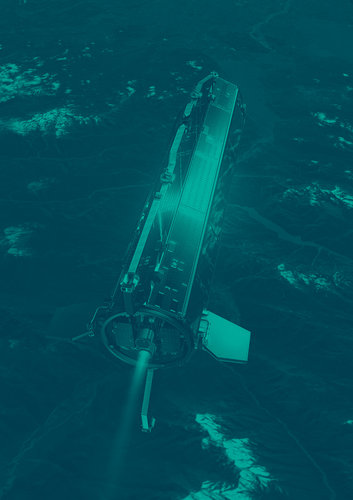The future of gravity is MAGIC
The latest European State of the Climate report states that, last year, Europe suffered its hottest summer on record. The heat and a persistent lack of rain caused drought which, at its peak, affected much of the continent. This not only illustrates the reality of climate change, but also how precarious our supply of freshwater can be, even in western Europe where the climate is relatively moderate.
By delivering frequent and accurate gravity measurements, a new space mission called MAGIC, a cooperation between ESA and NASA, will help make the important task of managing our precious water supplies more efficient.
One wouldn’t necessarily associate measuring variations in the strength of Earth’s gravity field from space with water management. Nevertheless, the MAGIC mission, short for Mass Change and Geophysics International Constellation, will do just this in order to record exactly where Earth’s water is stored and how it moves from place to place.
And new studies show that it will do this more accurately and faster than has been done before.
While the value it will bring to our scientific understanding of the water cycle cannot be understated, its relevance to applications and services such as water management is also clear, especially as the news of fields of shrivelled crops and dry riverbeds is becoming all too common.
ESA contributes to MAGIC with its Next-Generation Gravity Mission (NGGM) and NASA with its Mass Change Mission, each mission being a pair of identical satellites. The data from both missions, processed synergistically by scientists, will deliver unprecedented information on mass distribution and transport in the Earth system.

Presented today at the European Geosciences Union (EGU) General Assembly in Austria, MAGIC builds on the solid heritage of measuring gravity from space laid down by ESA’s GOCE mission, the US–German GRACE tandem satellite mission and GRACE Follow-On mission.
The reason for using gravity measurements to map water storage – water in rivers and lakes, underground and in ice – and how these bodies of water change and move might seem odd, but tiny temporal variations in the strength of our gravity field are caused by fluctuations in water reservoirs and changes in ice mass.
Mapping Earth’s gravity precisely and frequently over time reveals where these reservoirs of water and ice are and, importantly, how they are changing.
ESA’s Ilias Daras said, “The NGGM/MAGIC mission was approved to go forward at ESA’s Council at Ministerial Level in November, so we are working hard to bring this fabulous mission to fruition.
“The really novel thing about the mission is that it will deliver mass-change products at higher resolution and, thanks to the orbits, the satellites will be able to measure changes much quicker than current missions measuring gravity. This will be key for monitoring droughts, floods, ice melt and sea-level rise.”
Speaking at the EGU General Assembly, Roland Pail from the Technical University of Munich, explained, “Recent studies have shown that compared to the GRACE-type single pair of satellites, MAGIC’s two-pairs of satellites could deliver gravity-field data products with homogeneous long-term product quality.
“The MAGIC constellation will also give us gravity products at least every three to five days and they would need much less post-processing for end-users than the data we get today.”
Annette Eicker, from the HafenCity University Hamburg, added, “The MAGIC constellation is expected to provide a significant added value for hydrological applications.

“MAGIC will give us data on more than 90% of Earth’s major hydrological units such as river basins and aquifers with 260 km spatial resolution and with the accuracy needed by users. This is not possible with unsmoothed products from satellite missions such as GRACE Follow-On.”
We may be on course for another hot dry summer this year where water resources will, yet again, be put under pressure in parts of the world where this hasn’t typically been a major issue. Unfortunately, the climate crisis makes events such as this much more likely as time goes on so understanding how our water is being affected is critical to decision making.
In the future, the MAGIC mission is envisaged to make a real difference is understanding the movement and flow of Earth’s stores of water and ice, which, in turn, will help manage our most important resource – water.















 Germany
Germany
 Austria
Austria
 Belgium
Belgium
 Denmark
Denmark
 Spain
Spain
 Estonia
Estonia
 Finland
Finland
 France
France
 Greece
Greece
 Hungary
Hungary
 Ireland
Ireland
 Italy
Italy
 Luxembourg
Luxembourg
 Norway
Norway
 The Netherlands
The Netherlands
 Poland
Poland
 Portugal
Portugal
 Czechia
Czechia
 Romania
Romania
 United Kingdom
United Kingdom
 Slovenia
Slovenia
 Sweden
Sweden
 Switzerland
Switzerland

































